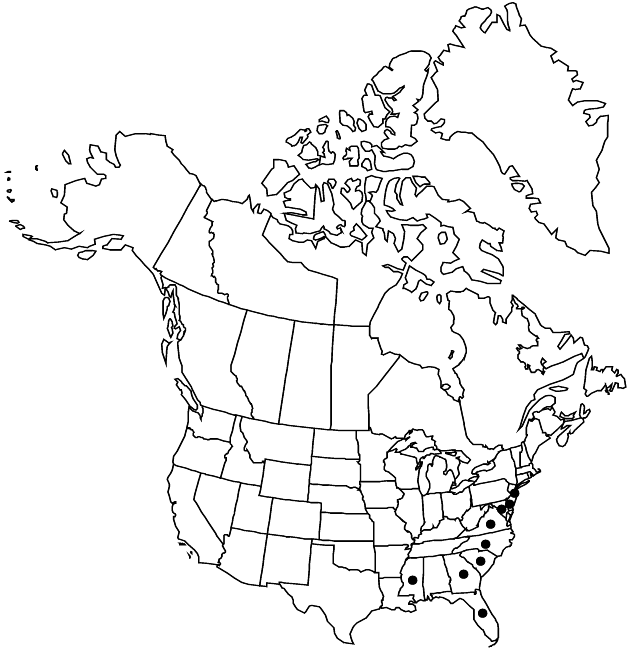Prenanthes autumnalis
Fl. Carol., 193. 1788.
Plants 40–140 cm; taproots thickened, tuberous. Stems 1–5, erect, mostly green with mottled purple, slender, simple, glabrous. Leaves: proximal present at flowering; petiolate (petioles winged); blades oblong to linear, 7–18 × 0.5–6 cm, coriaceous, bases attenuate, margins deeply pinnately lobed or divided, lobes narrow and at right angles, apices acute to acuminate, faces glabrous or slightly glabrate along veins; distally sessile and much reduced. Heads (1–2 in pedunculate lateral clusters) in spiciform or racemiform arrays. Involucres cylindro-campanulate, 10–13 × 3–4 mm. Calyculi of 6–8, green to purple, triangular to subulate bractlets 1–4 mm. Phyllaries 7–8, pink or purple, linear to elliptic, 8–13 mm, glabrous. Florets 8–10; corollas usually pinkish, sometimes lavender or white, 11–17 mm. Cypselae dark green, elliptic to linear, subterete to angular, 3.5–5.5 mm, indistinctly 8–10-ribbed; pappi pale-yellow to tan, 5 mm.
Phenology: Flowering Aug–Oct.
Habitat: Coastal plain, low savannas, sandy pinelands, moist places, swales
Elevation: 0–200 m
Distribution

Del., Fla., Ga., Md., Miss., N.J., N.C., S.C., Va.
Discussion
Prenanthes autumnalis is recognized by its erect, slender habit, pinnately lobed proximal leaves, narrowly racemiform or spiciform arrays of heads, glabrous phyllaries, and usually pinkish corollas.
Selected References
None.
Lower Taxa
"fine" is not a number.